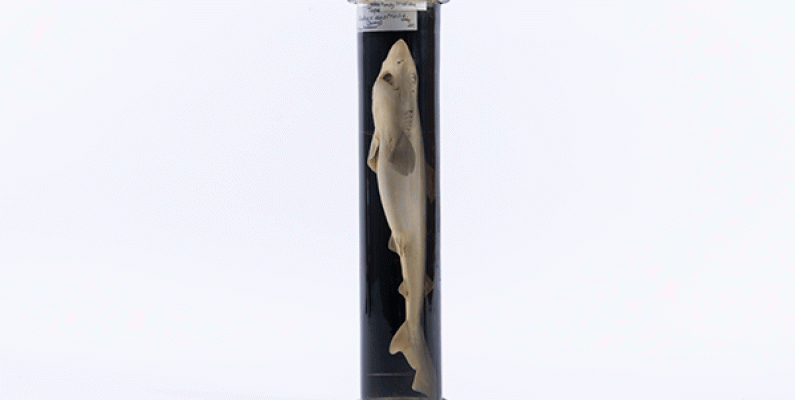
The kingpin of marine ecosystems, sharks are regularly preyed on by much smaller beings – us. School sharks are sometimes called Soupie for their use in making shark fin soup, but they are not the only members of the Elasmobranchii group (cartilaginous fish) that are consumed by humans. The large-snouted elephant fish, lemon shark and many species of skates and rays are commonly found on menus the world over. These fish are sold for meat, and/or finned at sea for making shark fin soup. A shark or ray with fins removed and then dumped back into the water is doomed to die. The practice of discarding shark bodies after finning was banned in New Zealand in 2014.

School shark, Galeorhinus galeus. By D Ross Robertson. Public Domain Mark.
Shark fishing began in New Zealand in the mid-1940s. They were primarily hunted for liver oil, a rich source of vitamin A at the time. After the decline of the oil industry, a demand for their meat grew in the 1950s and exists to date, with about 3000 individuals caught each year. Although regularly hunted, school sharks are currently listed as vulnerable by the International Union for Conservation of Nature.
School sharks have a widespread distribution throughout the temperate waters of the world and are known for their long-distance migration. They have a generalist diet consisting of fish and squids. Females are larger than males, as with most shark species, and usually 30, but up to 50 young are born in the entire lifespan of a female. These fish can live to up to 60 years of age and females usually mature at about 150 cm. A unique characteristic of school sharks is that they can close both their eyelids, which most fish can’t do!
Sharks are important for the health and stability of marine ecosystems. Through top-down control on smaller animals in the sea, they maintain balance and harmony in these systems. Although displayed as “tastiest” in the est. 1868 exhibition at Otago Museum, one wonders if these animals should still have a place on the menu, in our currently threatened and constantly changing world.
est. 1868 is open daily in the Special Exhibitions Gallery, 10am to 5pm, until 14 April 2019. Entry is free.
Top image: School shark, tupere, Galeorhinus galeus. Otago Harbour, Dunedin, 1887. Otago Museum Collection. VT1924. By Kane Fleury © Otago Museum.
